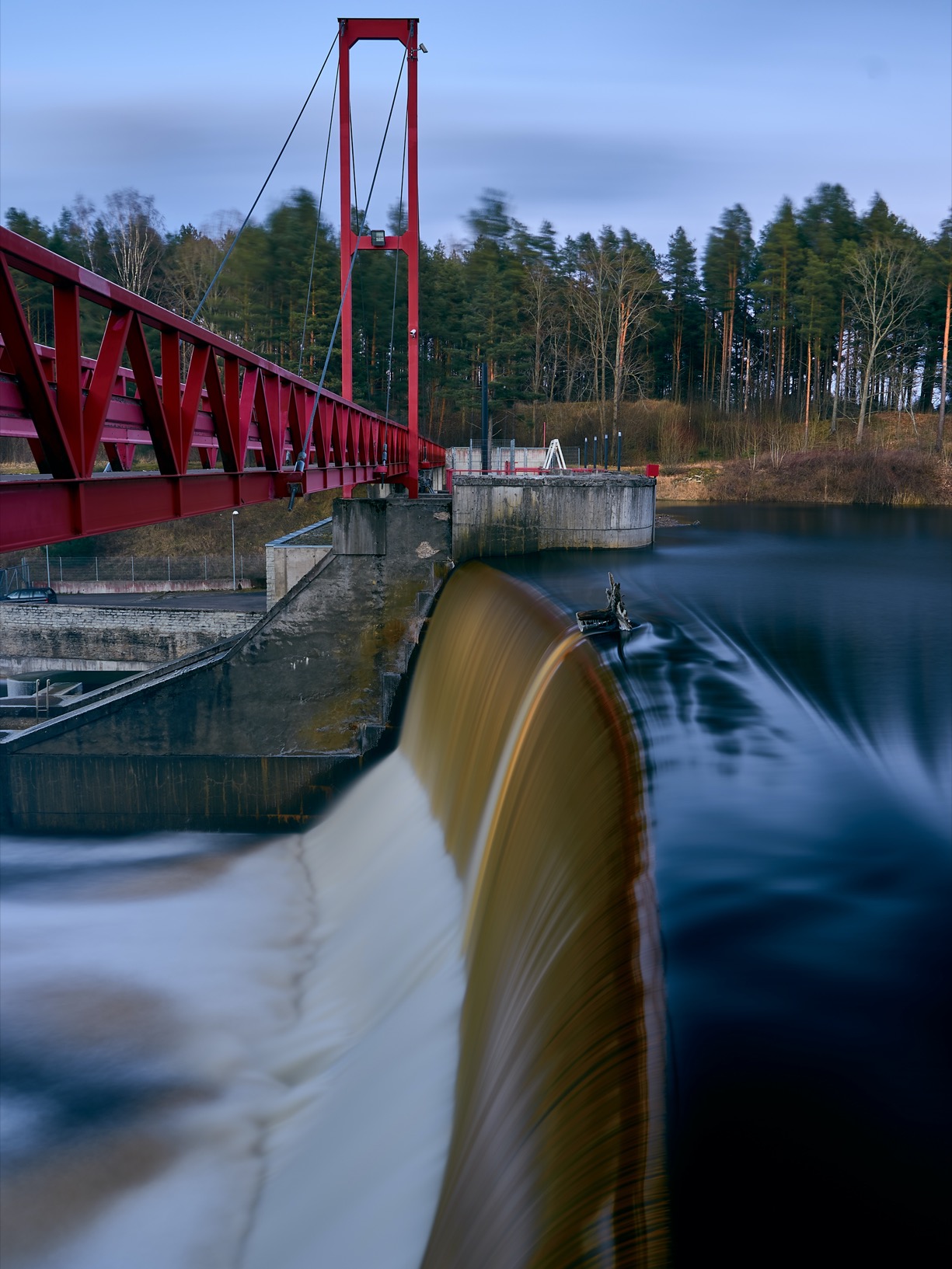Estonian rivers have a relatively small hydropower potential and much of it is already in use
In a hydroelectric power plant, the kinetic energy of the river’s falling or flowing water is converted into electricity. Hydropower is considered a type of so-called green energy because it avoids the consumption of fossil fuels and running water itself is a renewable energy source. However, there are also serious problems with hydropower.
Or rather, the problem is not with hydropower itself, but with the way it is obtained. A certain amount of water is needed to keep the power plant running. However, the volumetric flow rate of rivers during a year may vary tenfold, which is why the operation of a hydroelectric power plant requires the damming and collection of water to ensure the availability of water even during water-poor periods and to prolong the impact of high water. This, in turn, causes fluctuations in the flow of the water bodies, which can leave areas downstream of the reservoir dry for some time during water-poor periods. This leads to the loss of riverine habitats and species, as there is not enough water in the dry riverbed.

Reservoirs cover a large area. For example, the Narva Reservoir, built for a hydroelectric power plant, with an area of 191 km2, is the third largest lake in Estonia. Unlike in natural water bodies, soil degradation and greenhouse gas emissions often occur at the bottoms of reservoirs. Mud and sediment accumulating in the reservoirs are also a major problem and should be removed regularly, but this is very costly. When dams are opened or broken, which is also quite common, mud and sediments are transferred downstream, covering large areas. This, in turn, can significantly damage the species of the river, or simply destroy the entire habitat or all riverine species.
The dam of a hydroelectric power plant often cuts off the river, preventing the movement of fish species [1]. Salmon, brown trout, vimba bream, and river lamprey may not be able to travel from the sea to rivers for their spawning; other fish species also need to migrate along the river for breeding, feeding, sheltering, wintering, and other purposes, which is prevented by the dam. For example, due to the Narva hydroelectric power plant belonging to Russia, the fish of Lake Peipsi and its basin are isolated from the sea. Another example is the Linnamäe hydroelectric power plant in Estonia, which hinders the migration of fish between the sea and the Jägala River. The section of the river between several dams is turned into an enclosed habitat where inbreeding depression and consequent genetic withering may occur, leading to the weakening of genetic material and the extinction of species.
Hydroelectric power plants are mostly built on rapids, which thus lose their quality and suitability for fish. Brown trout and salmon prefer the fast-flowing and rocky sections of the river, which, in the case of the existence of hydroelectric power plants, are often turned into a reservoir.
Estonian rivers have a relatively small hydropower potential and much of it is already in use. Therefore, hydropower cannot be a solution for Estonia’s growing electricity demand. However, flowing water can significantly alleviate energy shortages in more mountainous countries, such as Canada and the countries of Central Africa.
In addition to the flow of rivers, the use of tidal (high and low tide) and wave energy to generate electricity is now being developed. However, the small tides and waves of the Baltic Sea do not attract such investments.
Last modified: 10.03.2021
Text: Kristjan Piirimäe
Editors: Sigrid Ots, Reigo Roasto, Tanel Ader
________________________________________________________________________________
[1] J. Tambets, R.. Järvekülg, M. Tambets. Eestis ei ole hüdroenergia roheline. Eesti Loodus 2007/7.